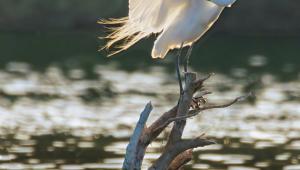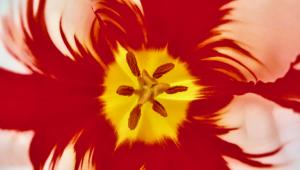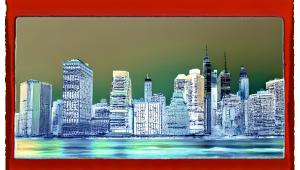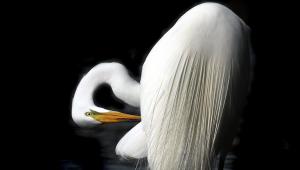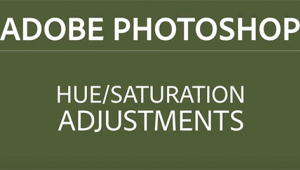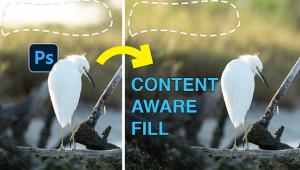Scott Kelby Answers Your Tough Photography Questions in “Ask a Pro”
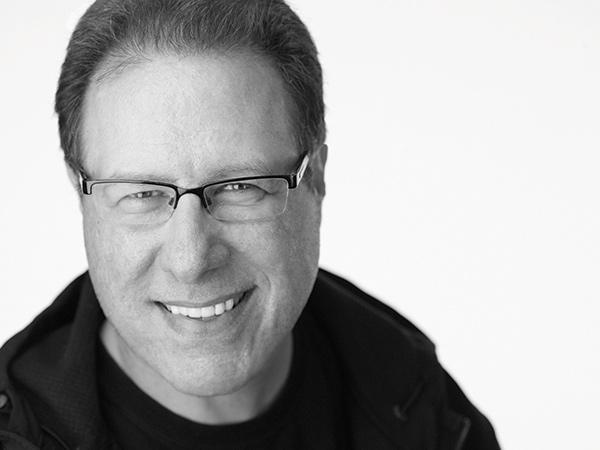
Q. I have a Lightroom catalog that contains pictures I have accidentally erased. The items are not in the “Recycle Bin” nor do I have any other access to the JPEGs. Is there anything that can be done using Lightroom to retrieve the JPEGs?
A. I have bad news and some potentially “OK” news, but there’s not a lot of good news. There’s nothing I know of that can retrieve those images you’ve erased because … well, they’ve been erased. However, I’m hoping that the previews of those images, which are stored in Lightroom’s database, are still nice and sharp. (In other words, at some point you rendered the standard or full-size previews.) If the previews are still nice and sharp, you could make them full-screen size (press the letter “f” on your keyboard), then take a full-screen capture of each image and save those captures as JPEGs. While they won’t be as high a resolution as the originals for sure, at least you’d have all those images back, and they would look sharp and crisp at full-screen size. Then, I’d reimport all those screen capture versions back into Lightroom and those would be the surrogates for the real thing, which is better than not having them at all. Here’s wishing you success in this screen cap mission.
Q. Is there software available to calibrate a computer monitor with a printer? I have a Spyder to calibrate my monitor, but the colors are still off when I print my photos on my Epson R1900.
A. Well, there’s not a software application per se, but there is a piece of software that is absolutely critical to obtaining the types of prints you want, and that is a color profile for the exact paper you’re going to be printing on, made for the exact printer you’re going to be printing on. These color profiles are provided by the paper manufacturers, and without downloading and installing those in Photoshop, you will still need the Spyder hardware calibrator to start the process. Getting your monitor’s brightness correct or adjusting the print to compensate are just as important as calibrating your monitor. In fact, calibrating your monitor is only step one. There’s a bit to this (more than I can answer in the column), which is why this is the perfect opportunity to casually mention my book, The Adobe Photoshop CC Book for Digital Photographers (from New Riders Publishing). It includes an entire chapter on how to configure your prints so they match your monitor. You can buy the eBook version and your prints will look better tonight.
Q. I presently shoot 99 percent of my wildlife and nature photos with a Canon EOS 5D Mark III. I’m looking to upgrade and cannot decide between a 7D Mark II or a 5DS R. I want images that can be printed up to 20x24 inches or maybe larger. What would your preference be?
A. The Canon 5D Mark III can print 20x24-inch images without a problem, so upgrading all the way to the 5DS R probably isn’t necessary. I have a 5DS R and while the images are super sharp, I rarely use it (and instead mostly use my 5D Mark III) because the image file sizes are gigantic. Those file sizes eat up hard drive space, RAM, and memory card space like you cannot believe, and slows down Photoshop big time. So, unless I need a really, really high resolution, I stick with my 5D Mark III. For you, I think another strike against the 5DS R is that with its slow 5 frames-per-second (fps) rate it’s really not an ideal camera for wildlife. So, between that and dealing with 50-megapixel file sizes, I’d have to steer you away from that camera body. That being said, the 7D Mark II would be awesome for wildlife, but I don’t think you’d be as happy with that crop sensor for landscape photography as you are with your current full-frame 5D Mark III, so it’s kind of a tradeoff. With what you’re shooting, if you still want a higher megapixel size, a better fps for your wildlife than what you currently have, and a whole bunch of other improvements (like a true touchscreen LCD), I would skip the 7D Mark II and 5DS R and give a serious look at the 5D Mark IV. I think it’ll get you closer to where you want to be, and save you some serious money at the same time.
Q. No matter what I do, why can’t I get my camera to capture the same colors at sunset that I see with my eyes? Also, the colors in my photos tend to run together and do not have definite breaks like they do with a spectacular setting sun reflecting off the clouds. What am I doing wrong?
A. It’s not you. It’s me. (Sorry, I’ve just always wanted to say that.) Well, the good news is, it’s not you. The problem really is how darn good the human eyes are. The tonal range the eyes can capture is really remarkable, which is why we’ll stand in front of something that is backlit, like a person with the sun behind them, and we see the scene in front of us as if they’re not fully backlit. We see the person’s face and their clothing perfectly because our eyes are just effortlessly that good! Then we hold a DSLR up to our face and look through the viewfinder and it looks exactly the same—we still see all the color and detail. But the moment you press the shutter button your camera’s sensor takes over, and as great as they are today, they are still so far behind what our eyes can capture at any given moment it’s not even funny. Your sensor sees your subject as a silhouette. Maybe one day the camera engineers will be able to create a sensor that has the depth and range of the human eye, and that will probably happen sooner than we think. But for now, the eye wins this competition every time. Luckily for us, God invented Photoshop. Well, actually it was Thomas Knoll, but Photoshop is so amazing that I have to think he definitely had some help from above. ;-)
Scott Kelby is a photographer, Photoshop Guy, award-winning author of more than 50 books, and CEO of KelbyOne, an online education community dedicated to helping photographers take the kinds of images they’ve always dreamed of. You can learn more about Scott at his daily blog (scottkelby.com), or follow him on Twitter: @scottkelby.
Editor’s Note: Ask a Pro is a Q&A column from professional photographer, writer, and educator Scott Kelby. Scott is here to answer all your photography-related questions, so if you have something you’d like to know, e-mail him at editorial@shutterbug.com (with “For Scott Kelby” as the subject line) and your query could be featured in the next edition of Ask a Pro.
- Log in or register to post comments
















